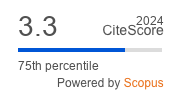Article | Open Access
Blak, Bi+ and Borderlands: An Autoethnography on Multiplicities of Indigenous Queer Identities Using Borderland Theory
| Views: | 5683 | | | Downloads: | 3357 |
Abstract: Indigenous queer people often experience a conflict in identity, feeling torn between long-standing cultures and new LGBTIQA+ spaces; however, conflicts are being reframed by new generations of Indigenous queer academics who consider decolonising ideas about white heteronormativity. The following autoethnography of my own Indigenous queer journey (muru) uses narrative analysis to explore the challenges of living between worlds as well as the difficulties in gaining acceptance from multiple cultures. This story, like many others, highlights the power of narrative as it reflects the nuanced experiences of Indigenous queer people with identity multiplicity via the application of borderland theory. The narrative analysis forefronts the wide impact of internalised phobias (homophobia, biphobia, and racism) and its impact on performative self-expression of sexual identity, self-sabotage, institutionalized racism and shadeism, and community acceptance, particularly for bi+ sexual identities. This article will explore existing literature which illustrates how navigating the multiplicity of identities may result in poorer social and emotional wellbeing, particularly for Indigenous queer youth. The article concludes with final comments and suggests future directions in mixed method research with Indigenous queer Australians to better understand and improve their social and emotional wellbeing.
Keywords: Aboriginal; borderland theory; Indigenous; internalised homophobia; LGBTIQ; queer; youth
Published:
© Mandy Henningham. This is an open access article distributed under the terms of the Creative Commons Attribution 4.0 license (http://creativecommons.org/licenses/by/4.0), which permits any use, distribution, and reproduction of the work without further permission provided the original author(s) and source are credited.


